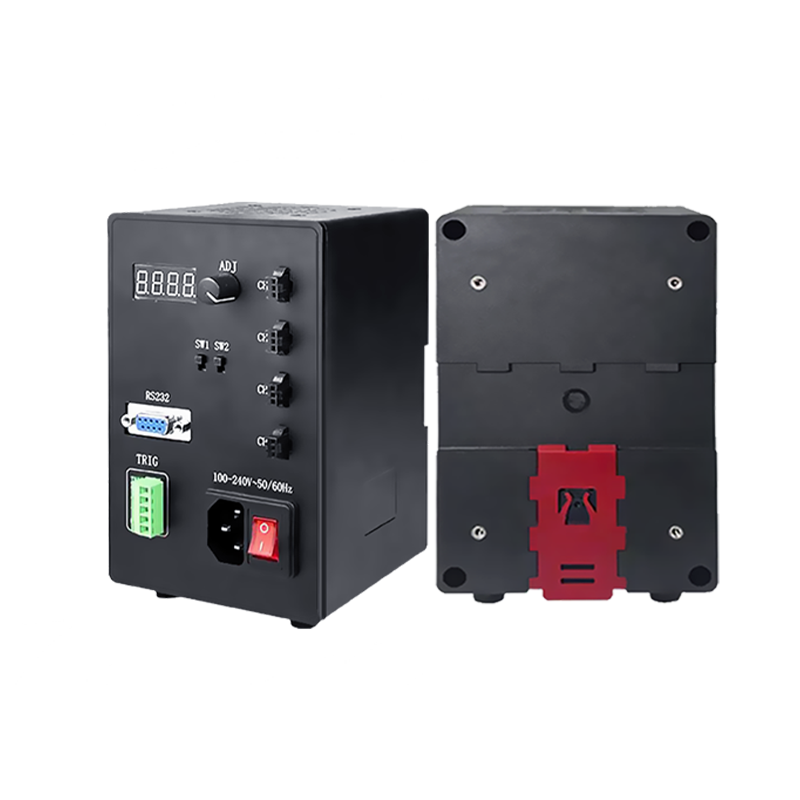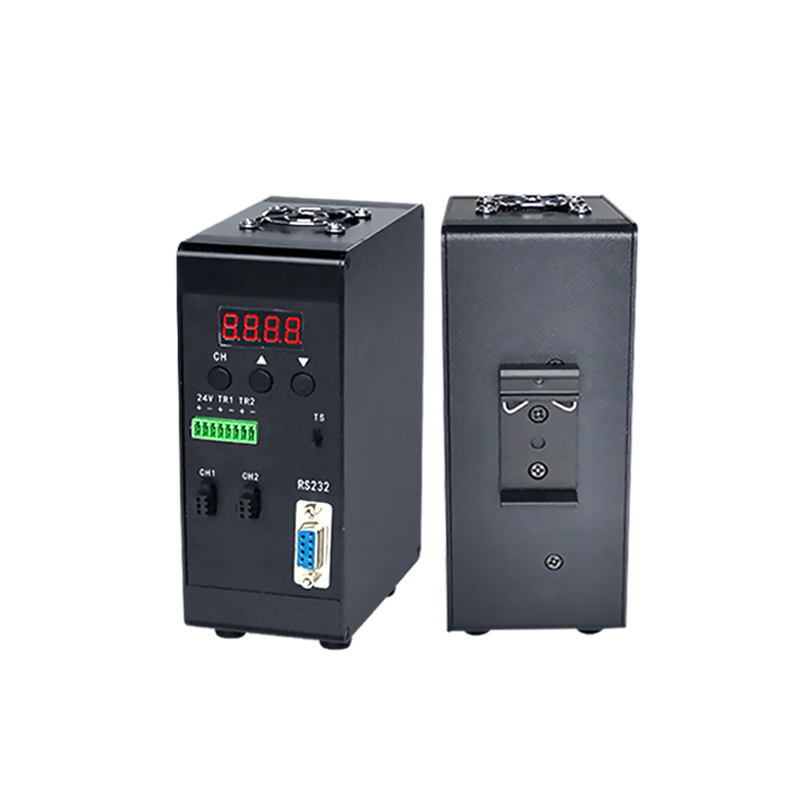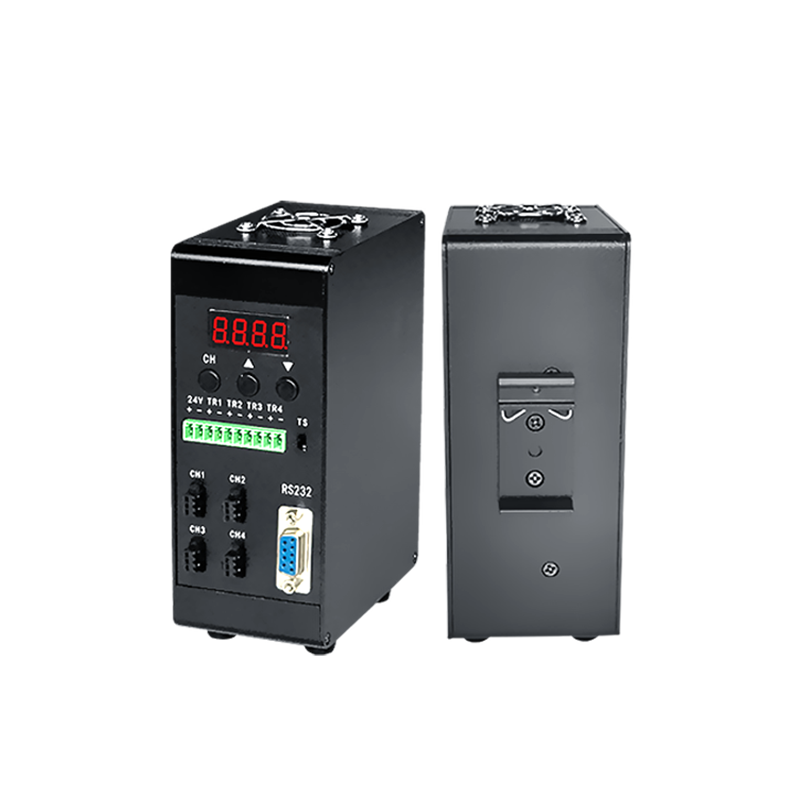Fördelar med koaxial belysning i industriella visionssystem
Förstå fördelarna med koaxellt ljus
Koaxbelysning är en specialiserad typ av belysning där ljuskällan är perfekt anpassad till den optiska axeln i ett bildsystem. Denna inställning säkerställer optimal justering och ljusfördelning, vilket gör den oumbärlig i tillämpningar som kräver precision och noggrannhet. Genom att leda ljuset genom en halvtransparent spegel, uppnås en enhetlig belysning som täcker motivet jämnt, vilket är avgörande för konsekventa bildresultat.
Den enhetlighet som koaxbelysningen ger ökar synligheten på ytorna genom att skyggen elimineras, vilket är viktigt för detaljerade inspektioner. Denna typ av belysning är särskilt fördelaktig i situationer där även mindre fel måste upptäckas och dokumenteras med precision. Genom att minimera skuggor och reflektioner möjliggör koaxbelysning en tydlig differentiering av ytdetaljer, vilket kan vara särskilt fördelaktigt inom områden som kvalitetskontroll och feldetektering inom olika industriella tillämpningar.
Fördelar med att använda koaksilt ljus för visuell inspektion
Koaksiell belysning förbättrar bildkvaliteten avsevärt vid visuell inspektion. Genom att ge direkt belysning ökar koaksilljusning kontrasten, vilket möjliggör detaljerad bildbehandling som är avgörande för att identifiera defekter. Detta är särskilt fördelaktigt i branscher där precision är avgörande, till exempel inom elektronik- eller fordonsindustrin, där även den minsta defekten kan påverka prestandan.
Dessutom spelar koaxbelysning en viktig roll för att minimera skuggor och reflektioner, vilket är vanliga problem med andra typer av belysning. Skuggor och reflektioner kan skapa visuellt buller och fördölja viktiga delar som behöver inspekteras. Koaxbelysning ökar noggrannheten genom att ge ett enhetligt ljus direkt på ytan, vilket minskar dessa störningar och säkerställer att inspektionerna är grundliga och exakta.
Slutligen är koaxiell belysning till hjälp för att upptäcka ytafel, särskilt på ojämna ytor. Denna typ av belysning avslöjar brister som annars skulle ha kunnat vara dolda under normala ljusförhållanden. Genom att ljuset på ytan är jämnt avslöjar koaxiallumporna små oregelbundenheter, till exempel håligheter, repor eller fina linjer, vilket underlättar en effektivare kvalitetskontroll och säkerställer att endast felfria produkter går igenom tillverkningsprocessen eller inspektionen.
Användning av koaxiellt ljus i maskinseende
Koaksiellt ljus spelar en viktig roll i automatiserade inspektionssystem genom att tillhandahålla bilder av hög kvalitet som är nödvändiga för att upprätthålla kvalitetskontrollen. I maskinvision, där precision är av största vikt, säkerställer koaxiell belysning att även de minsta detaljerna och defekter syns, vilket gör det möjligt för systemen att exakt analysera och utvärdera föremål. Denna precision uppnås genom den enhetliga belysningen som koaksilljus ger, vilket minimerar fel som är kopplade till dåliga belysningsförhållanden. Därför kan kontrollsystem som är utrustade med koaxiell belysning effektivt upprätthålla de standarder som krävs för produktkvalitet och säkerhet.
Dessutom är koaxbelysning särskilt fördelaktig i produktionsmiljöer med hög hastighet, där snabba inspektionscykler är nödvändiga. Industrier som elektronik, biltillverkning och förpackningar drar stor nytta av den effektivitet och snabbhet som denna belysningsmetod erbjuder. Till exempel kan eventuella defekter påverka produktens funktionalitet och säkerhet vid tillverkning av elektriska komponenter, där noggrannhet är avgörande. Koaxbelysning underlättar snabb upptäckt och bedömning av dessa komponenter, vilket säkerställer att de uppfyller branschstandarderna innan de når konsumenten. Därför stöder koaxbelysning inte bara efterfrågan på hastighet inom dessa sektorer utan garanterar också tillförlitligheten och kvaliteten på de tillverkade produkterna.
Jämförelse av koaxellt ljus med andra typer av belysning
När man jämför koaksilljus med ringljus framträder tydliga skillnader i ljusfördelning och tillämpnings lämplighet. Koaksiellt ljus ger enhetlig belysning genom användning av en strålsplitter eller delvis spegel, vilket minimerar skuggor och förbättrar bildens klarhet. Detta gör den idealisk för inspektion av mycket reflekterande eller platta ytor där detaljer kan missas på grund av bländning eller ojämn belysning. Ringlampor omger däremot linsen och ger diffust belysning, vilket är lämpligt för att lyfta fram föremål med komplexa strukturer men kan skapa oönskade skuggor i vissa scenarier.
Dessutom understryker skillnaden mellan koaksilljus och kupolljus deras effektivitet på komplexa ytor. Koaxbelysning är skicklig på att belysa platta och reflekterande ytor, vilket gör den utmärkt för att identifiera defekter som repor eller bulor. Kupollampor ger emellertid en jämn, skuggfri belysning över oregelbundna ytor genom att sprida ljus från alla håll, vilket gör dem lämpliga för föremål med varierande texturer och konturer.
Sammantaget ger koaxbelysning ökad effektivitet i maskinvisualsystem när man beaktar faktorer som enkel installation, kostnadseffektivitet och underhåll. Dess precision gör att den är energibesparande och ger hög konsistens, vilket minskar behovet av frekventa justeringar eller byten. Jämfört med andra typer av belysning kan koaksiala installationer vara mer enkla och mindre påträngande, vilket möjliggör sömlös integration i befintliga system.
Produkter med koaxilljuslösningar
Den DCS3-4C080W (120W) - 24PS ljusstyrare är en kraftfull och mångsidig lösning som är skräddarsydd för avancerade behov av koaksilbelysning. Den har en digital design med fyra kanaler, var och en kan hantera upp till 120 W effekt med en AC100-240 V ingång. Denna robusta styrenhet garanterar en effektiv ljusfördelning, vilket gör den idealisk för komplexa maskintalsapplikationer där precision är avgörande.

Den DCM2.0-2C003W-5PS Mini Light Controller den är kompakt och fungerar med en anmärkningsvärd effektivitet vid olika inspektioner. Denna mini-ljustyrare stöder två kanaler på 3 W vardera, som körs på en 24 V-inmatning, vilket erbjuder en effektiv lösning för miljöer där utrymme är en begränsning utan att kompromissa med prestandan.

Slutligen, den DCM2.0-4C003W-5PS Mini Light Controller det ger ökad precision vid visuell inspektion. Med sin fyrkanalsuppsättning ger den 3 W per kanal i en 5 V-konfiguration, vilket utmärker sig i applikationer som kräver mer komplicerad ljushantering och kontroll, vilket säkerställer flexibilitet och hög prestanda.

Bästa praxis för att införa koaxbelysning
För att effektivt kunna genomföra koaxalljussystem krävs att man väljer rätt installationer utifrån inspektionskrav och materialtyp. Börja med att förstå de specifika inspektionsmålen och egenskaperna hos de berörda materialen. Till exempel kan genomskinliga eller starkt reflekterande material kräva mer exakt justering och styrning av intensiteten. Identifiering av den primära applikationen, t.ex. upptäckt av ytafel eller mätning av dimensioner, kommer att leda till val av ljusintensitet, storlek och placering.
Att justera ljusstyrkan och färgtemperaturen är avgörande för att uppnå optimal visuell kvalitet. Ljusstyrkan bör kunna justeras för att anpassa sig till olika inspektionsförhållanden, med högre intensitet för detaljerade inspektioner och lägre för allmänna översikter. Färgtemperaturen, mätt i Kelvin, påverkar hur färger visas i bildbehandling. Varmare temperaturer (cirka 3000 K) är lämpliga för att belysa vissa materialdefekter, medan svalare temperaturer (5000 K eller mer) kan belysa detaljer utan att förändra materialets naturliga färg.
Regelbundet underhåll av koaxialljussystem är viktigt för att säkerställa deras livslängd och prestanda. Rengöring av ljuskällan och de optiska komponenterna förhindrar att damm och restprodukter påverkar prestandan. Kontrollera lampan regelbundet och byta ut den innan den är slutförd för att upprätthålla ett jämnt ljus. Regelbundna kontroller av ledningar och anslutningar hjälper också till att undvika oförutsedda störningar. Genom att följa dessa bästa praxis kommer koaxialljussystem att förbli tillförlitliga och effektiva i olika inspektionsscenarier.
Slutsats: Att maximera inspektionskvaliteten med koaxbelysning
Sammanfattningsvis kan man säga att koaxbelysning avsevärt förbättrar inspektionskvaliteten genom att ge en enhetlig, skuggfri belysning, vilket är avgörande i olika industriella tillämpningar. Den har förmågan att belysa ytor med precision och det går att upptäcka defekter, repor och andra brister. Genom att införa koaxbelysning kan effektiviteten och noggrannheten förbättras, vilket gör det till ett oumbärligt verktyg i kvalitetskontrollprocesser inom olika sektorer.


